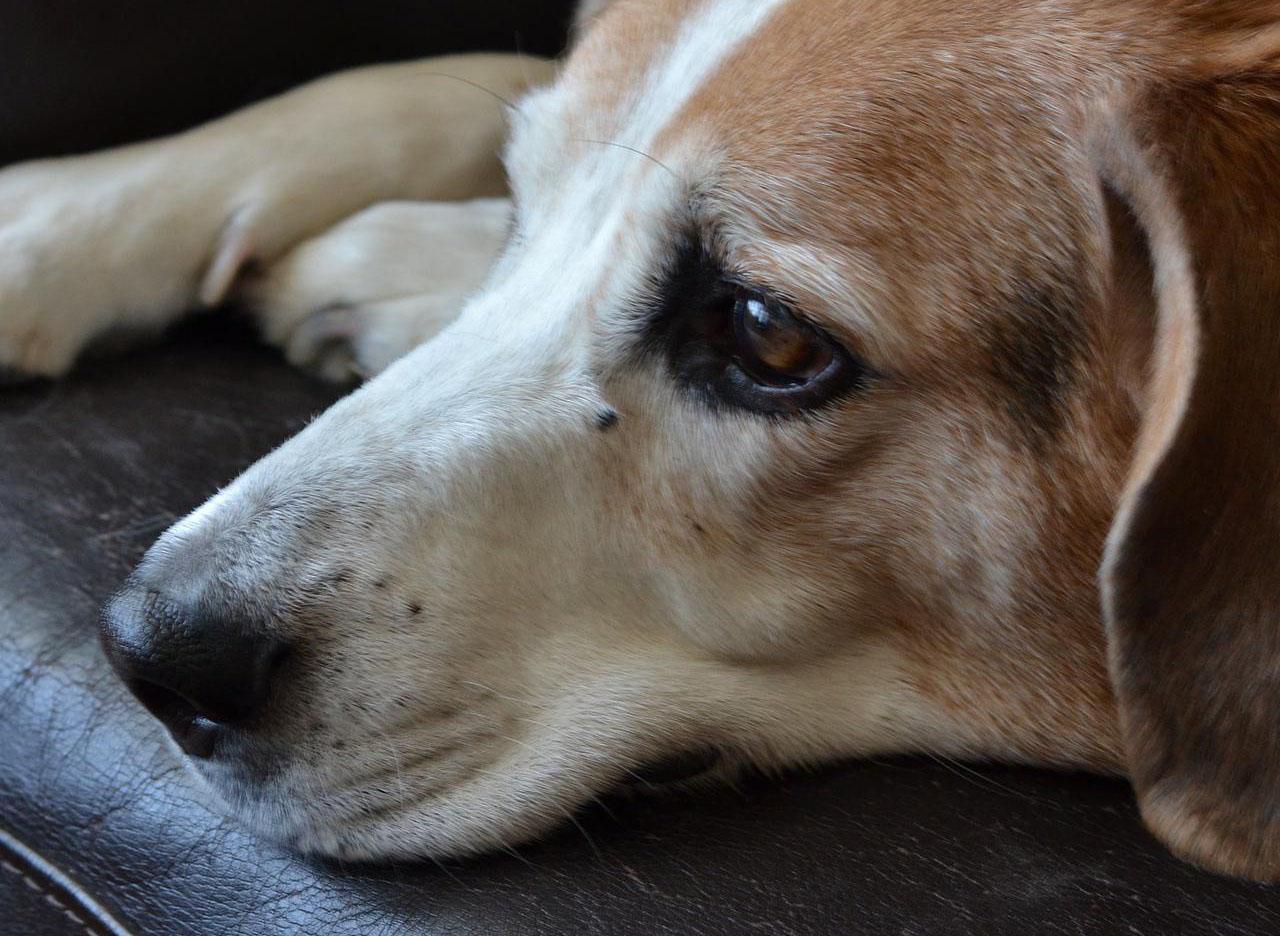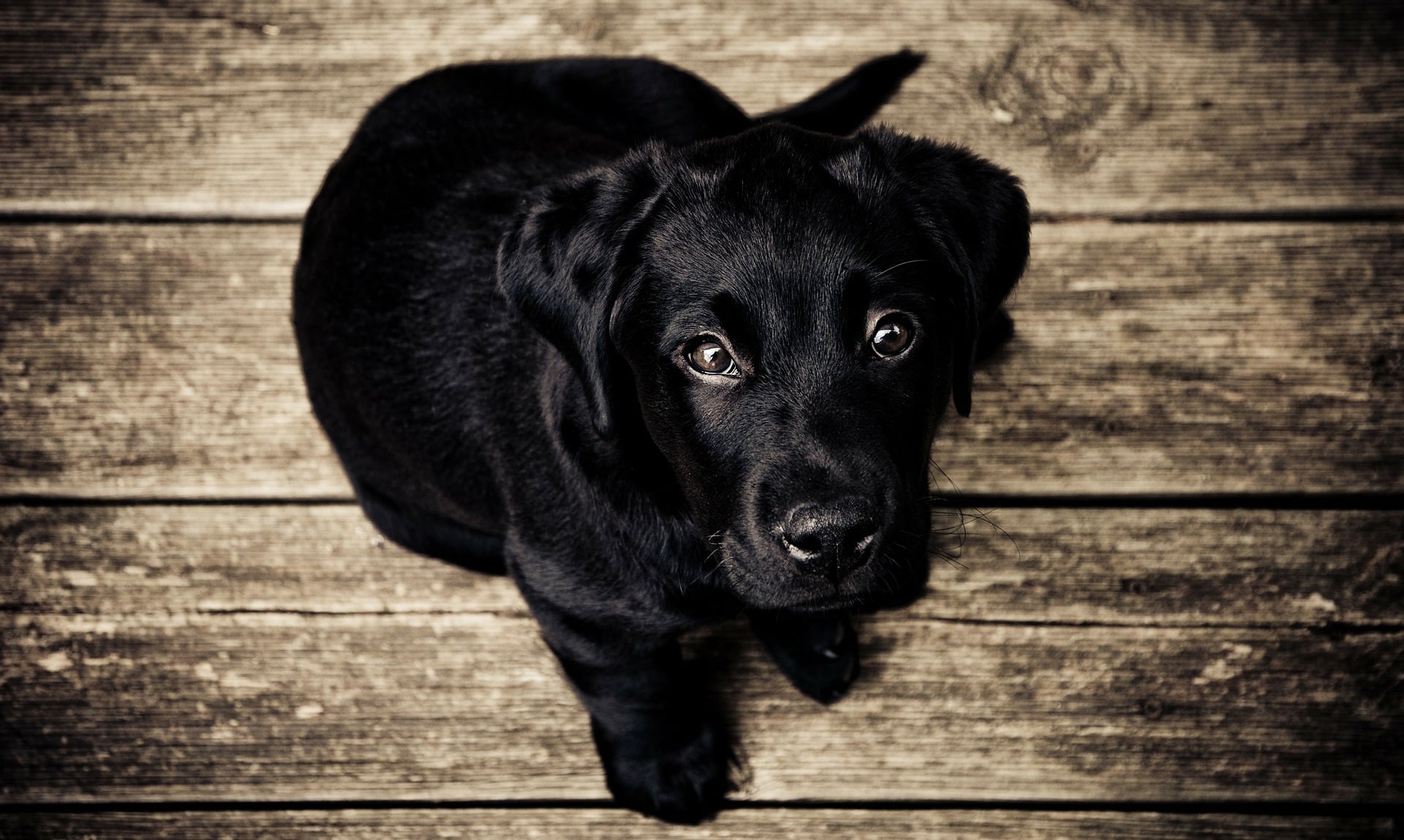Entropion dog surgery
Entropion is an abnormality of the eyelid formation that is frequently encountered in certain breeds.
Less visible than its alter ego, the ectropion, the entropion can be complicated to detect, and some owners are sometimes slow to bring their dog to the veterinarian, despite the great suffering and all the health complications that this disorder can cause.
Today, I propose to take a closer look at entropion in dogs, both to learn how to recognize it and to discover how to best manage it.
What is dog entropion?
Dog entropion is a disease of the eyelid consisting of an inversion of the latter. By inversion, we mean a phenomenon during which the eyelid rolls up towards the inside of the eye. Entropion is thus opposed to ectropion, which consists of the eversion of the eyelid towards the outside, exposing the mucous membranes that line the inside of the eyelid to the air.
In the case of entropion, the eyelid is rolled inward and the opposite occurs: the outer surface of the eyelid, covered with hair, is in contact with the eye. As a result, the dog's eyelashes and/or hair will rub against the animal's conjunctiva, either permanently or in specific contexts, for example when the dog blinks.
Entropion may involve the upper or lower eyelid and may be bilateral or unilateral, i.e. affecting one or both eyes. Most often, this abnormality is located in the outer corner of the lower eyelid. However, this disorder can take various forms, as is the case with the Shar Pei, frequently affected by an entropion of the upper eyelid.
It is generally a hereditary pathology that afflicts dogs from birth, although it only really develops during their growth. Finally, entropion is frequently associated with other types of malformations or malpositions of the eyelid, in particular with ectropion, in which case it is called "diamond eye" or macroblepharon.

Causes
In the majority of cases, entropion in dogs is hereditary. The gene responsible for this defect is passed on from generation to generation, and the condition is then said to be congenital or developmental.
However, there are also acquired entropions, which are not transmitted by genes, but occur as a result of environmental phenomena.
Hereditary entropions in dogs
Hereditary entropions are transmitted by genes. They are congenital when they appear in the puppy from birth, or developmental when they occur during growth, usually before puberty. An autosomal dominant inheritance is suspected, but there is no scientific consensus on this at this time.
Various genetic abnormalities may be involved in the development of entropion, including hypertrophy of the orbicular and/or palpebral tissues and microphthalmia, which is an atrophy of the eyeball. In the case of microphthalmia, the eye is too small in relation to the orbicular cavity, which leaves enough room for the eyelid to roll inwards.
As with many hereditary conditions in dogs, certain breeds are predisposed to the development of entropion. Small breeds, such as the Poodle, Bichon, and Shih Tzu, to name only the best known, are predisposed to infero nasal entropion, which is the rolling of the lower eyelid at the inner corner of the eye (towards the muzzle).
In these breeds, entropion is commonly associated with trichiasis (malposition of the eyelashes curved toward the eyeball) and epiphora (tearing). The most common entropion, and the one that has the most varied aspects, is the inferotemporal, that is to say the curling of the lower eyelid on the side of the external angle of the eye, towards the temple.
It mainly concerns the English Bulldog, the Bull Mastiff, the Cocker Spaniel, large breeds of dogs, the Beauceron and molosses, but it is also found in the Shar Pei. Finally, entropion of the upper eyelid occurs mainly in the Chow-Chow and Shar Pei, and remains rather rare in other breeds.
It is usually caused by an instability of the cutaneous fabrics of the forehead and the eyelids, which generate an exacerbated heaviness of the eyelids. The ligaments and the palpebral and orbicular muscles, which are not designed to support such a load, are not able to maintain correctly this eyelid much heavier than it should be.
Acquired entropions
When not hereditary, entropion in dogs is essentially the result of three main causes: muscle spasms, senility and scarring. Spastic entropions are the result of repeated muscle spasms over time, usually caused by persistent pain.
Dogs with chronic conjunctivitis, trichiasis or ectopic lashes, whose eyes are frequently traumatized, are susceptible to this condition. Senile entropion, which is mainly found in the Cocker Spaniel, occurs when the tendons and orbicular muscles become slack with age.
They no longer hold the eyelid properly forward, and it curls backward. Note that a senile pathology, whatever it is, always remains a pathology: it is not normal, and it is not because the dog is aging that it must be deprived of care.
Finally, scarring entropion occurs as a result of abnormal or unsatisfactory healing. This phenomenon can occur after trauma (shocks, scratches, etc.) or eye surgery. The removal of a tumor from the eyelid, for example, can result in scarring.

Symptoms
It is not always easy to diagnose entropion in dogs, especially when it takes a relatively mild or moderate form. Moreover, it is a multifaceted condition that can take different forms depending on the breed and age of the dog, as well as its origin (loosening of the tendons, excess skin folds, etc.).
Generally, the owner is alerted by the persistent and unsightly watering of his dog. Upon closer inspection of the eye, the owner may find it reddened, sensitive or irritated. Exacerbated sensitivity may result in miosis, which is an abnormal retraction of the pupil. The dog may also blink frequently, or hold its eyelid partially or completely closed.
In the most serious cases, the entropion is clearly visible. The owner may simply notice that the dog's eyes are not quite as normal as those of other dogs. The shape of the eyes may be unusual, especially the edge of the eyelids, which may be visibly rolled up.
Untreated entropion can lead to a number of complications, ranging from keratitis, due to dry eyes, to eye ulcers, chronic conjunctivitis, blepharitis and uveitis.
Even in the case of minor complications, it is important to note that a dog's eye is as sensitive as a human's. Having the hairs or eyelashes of his eyelid permanently misplaced and in contact with his cornea is therefore extremely painful for the animal.
In the most severe cases, entropion can also cause serious eye damage, altering the dog's vision or leading to complete blindness.
Treatment and prognosis of canine entropion
The treatment of dog entropion is exclusively surgical, but unfortunately it is a complex operation, because the pathology is more complicated than it seems. The entropion itself, i.e. the rolling up of the eyelid, is in fact the result of multiple factors: excess skin, weakness of the orbicularis muscle, hyperlaxity of the palpebral tendons...
However, treatment requires first of all finding the origin of the problem in order to implement the most appropriate intervention. The timing is not to be left to chance either: operated too late, the dog risks suffering from an incurable eye ulcer that could cost him his eye.
Operated too early, he is exposed to relapses, because the malposition of his eyelid is likely to evolve throughout his growth, either after a too early surgical intervention, making the latter useless. The prognosis of a dog with entropion is sometimes delicate, because the surgery necessary for a complete cure is not always feasible - although fortunately it is often possible.
Without surgery, the risk of eye ulceration is high, and blindness, or even preventive removal of the eyeball to spare the animal the horrible suffering that accompanies the development of an eye ulcer, may be inevitable. However, when properly managed with successful surgery, entropion in dogs has a good prognosis.
FAQ
How do I know if my dog has entropion?
It is not always easy to detect entropion in dogs, especially when it is mild. Any ocular symptom should alert you to the presence of a condition - entropion or otherwise. Tearing, redness, miosis, or other signs of ocular discomfort may indicate entropion. Sometimes the appearance of the animal's eyelids is visibly abnormal.
Can dog entropion be cured?
Yes, canine entropion can be completely cured through surgery, although it is not always possible or indicated.
Which dogs are predisposed to entropion?
Entropion is a hereditary pathology, so dogs whose parents have this anomaly are particularly prone. There is also a higher incidence in some breeds, including small dogs (Poodle, Bichon, Shih Tzu ...), molosses (English Bulldog, Mastiff ...) and large breeds (Beauceron, Dogue ...). Shar Pei and Chows-Chows are, as for them, predisposed to an atypical form of entropion affecting the upper eyelid, essentially because of their surplus of skin.
What are the risks of entropion in dogs?
Entropion in dogs is not only very painful, but is often accompanied by ocular complications. In the most severe cases, it can lead to an eye ulcer that can result in the loss of the eyeball. Dog entropion is one of these frequent pathologies, but still too often neglected despite the suffering they cause.
Any sign of ocular discomfort in your four-legged friend should therefore alert you: a simple watering of the eyes is never harmless, and it is not because your doggy looks good that he does not suffer.
Also, if your doggie is one of the long list of dog breeds prone to entropion, it is essential to pay special attention to the health of his eyes. A regular check-up at the veterinarian's office is highly recommended!

